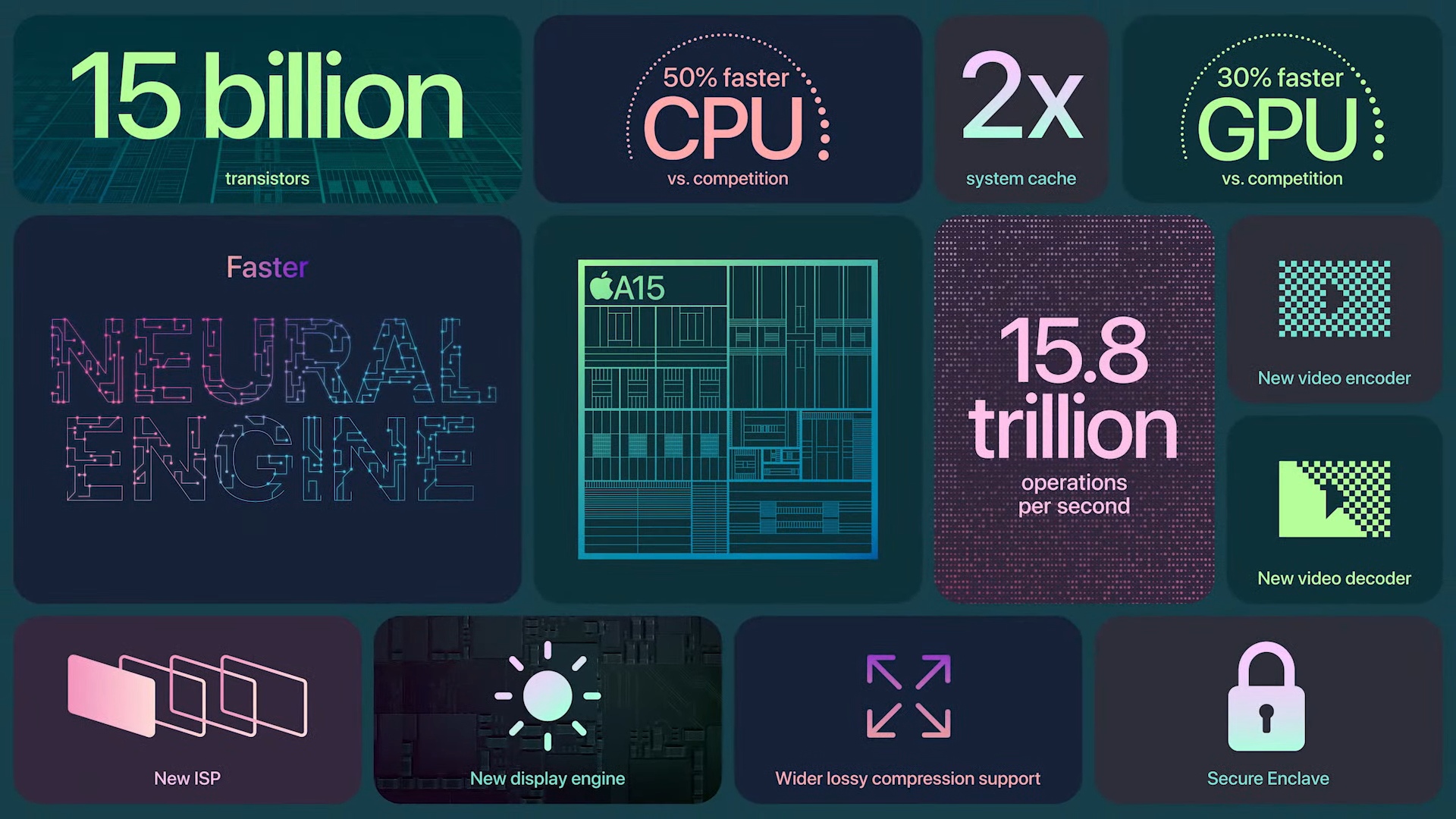Apple is known for having the most powerful chips for mobile devices. The company has, by far, the industry’s highest performance and efficiency per GHz, and this was possible thanks to the advances that occurred with each architectural change.
Now, with the Apple A15 Bionic, the performance improvement over previous generations seems to have smoothed out, and in fact, during yesterday’s presentation, there were few comparisons to the Apple A14 Bionic and lots of mentions of competing chips – perhaps because some manufacturers of chips has not yet surpassed the Apple A14 Bionic in many respects.
The new Apple A15 Bionic features a 2 + 4 core CPU configuration and a 4 or 5 core GPU, depending on whether it’s the normal iPhone or the iPhone Pro / iPad Min, and a 16-core NPU.
Apple claims that the CPU is 50% faster than the competition, while the GPU is 30% or 50% faster, depending on whether it’s 4 or 5 cores.
There is a new video encoder and decoder, and the new ISP allows for better algorithms for processing photos and videos. Finally, the system cache doubled to 32 MB.
The A15 Bionic vs. the A14 Bionic
Starting with AI performance, the A15 Bionic features a 16-core NPU, which gets 15.8 TOPs compared to the 11 TOPs of the A14 Bionic, which represents a 44 percent improvement.
Comparing the CPU and GPU with the previous generation, A14 Bionic, is more difficult as Apple hasn’t revealed these numbers, but the information around the iPad mini helps.
Apple claims the new iPad mini with A15 Bionic has a CPU an 40% faster is GPU an 80% faster compared to the previous iPad mini, which had the A12 Bionic.
Last year, Apple indicated that the A14 Bionic chip in the iPad Air had a CPU an 40% faster is GPU an 30% faster compared to the A12 Bionic.
So we have two different comparisons: A15 Bionic vs. A12 Bionic and A14 Bionic vs. A12 Bionic. With this, we can reduce the comparison of A15 Bionic vs. A14 Bionic.
As the CPU upgrade from A12 Bionic to A14 Bionic (40%) is the same as A12 Bionic to A15 Bionic (40%), it looks like the A15 Bionic has CPU performance similar to the A14 Bionic. Apple may be using the same CPU cores as the A14 Bionic or slightly modified versions.
If you look at the graphics performance, things change and the improvements are significant, with an increase in graphics performance of the A15 Bionic over the A14 Bionic of approximately 38% (1.80 / 1.40 = 1.38).
Regardless of CPU and GPU gains, Apple is still the leader in performance per watt. We’ll see what happens when Qualcomm launches its new generation of chips in a few months.

